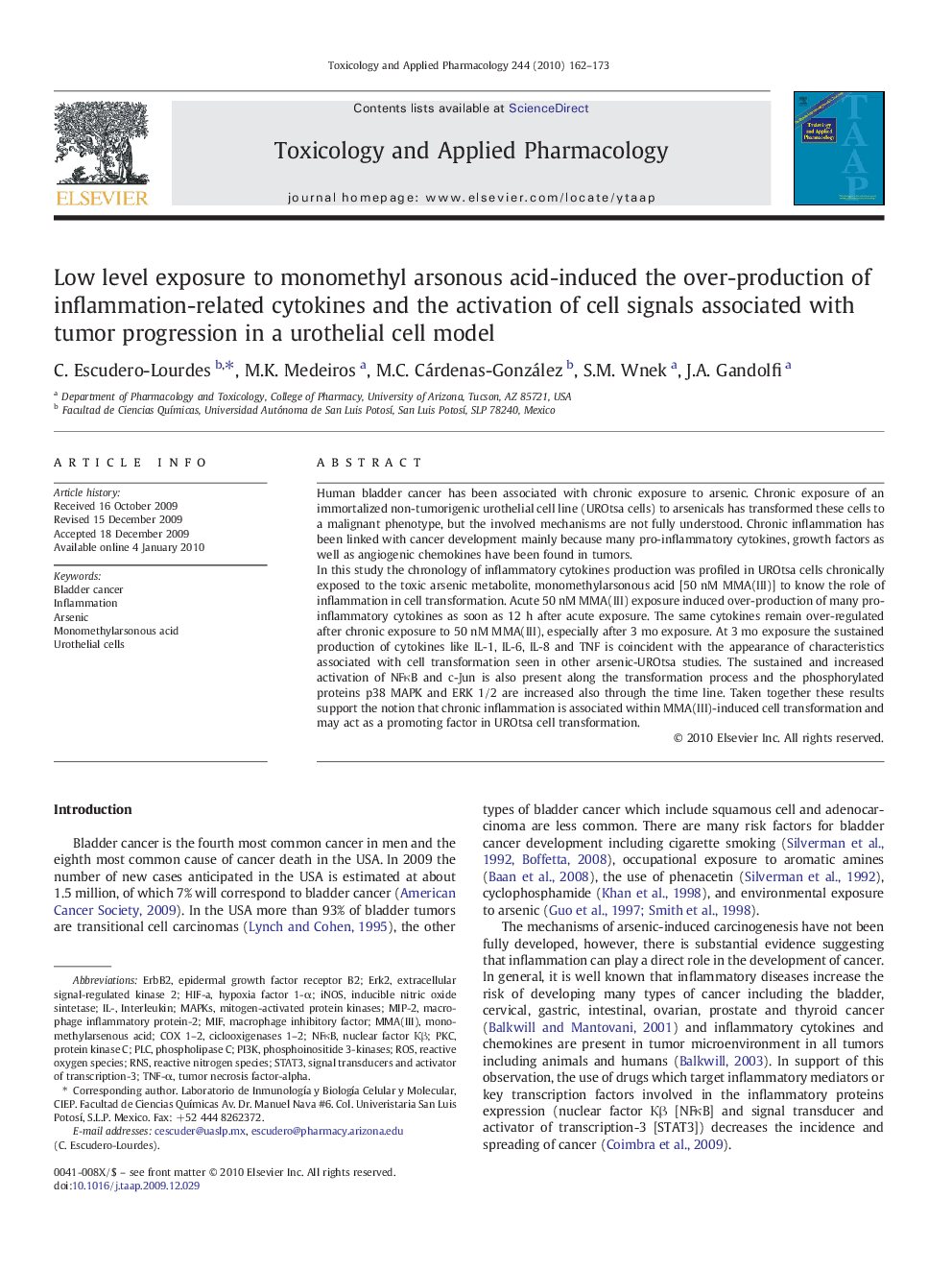| Article ID | Journal | Published Year | Pages | File Type |
|---|---|---|---|---|
| 2569710 | Toxicology and Applied Pharmacology | 2010 | 12 Pages |
Abstract
In this study the chronology of inflammatory cytokines production was profiled in UROtsa cells chronically exposed to the toxic arsenic metabolite, monomethylarsonous acid [50 nM MMA(III)] to know the role of inflammation in cell transformation. Acute 50 nM MMA(III) exposure induced over-production of many pro-inflammatory cytokines as soon as 12 h after acute exposure. The same cytokines remain over-regulated after chronic exposure to 50 nM MMA(III), especially after 3 mo exposure. At 3 mo exposure the sustained production of cytokines like IL-1, IL-6, IL-8 and TNF is coincident with the appearance of characteristics associated with cell transformation seen in other arsenic-UROtsa studies. The sustained and increased activation of NFκB and c-Jun is also present along the transformation process and the phosphorylated proteins p38 MAPK and ERK 1/2 are increased also through the time line. Taken together these results support the notion that chronic inflammation is associated within MMA(III)-induced cell transformation and may act as a promoting factor in UROtsa cell transformation.
Keywords
ERK2MMA(III)STAT3PLCRNSiNOSPKCERBB2MIP-2IL-PI3KMAPKsNFκBROSArsenicMonomethylarsonous acidinflammationinterleukintumor necrosis factor-alphaextracellular signal-regulated kinase 2Bladder cancerUrothelial cellsMIFMacrophage inhibitory factorTNF-αPhosphoinositide 3-kinasesphospholipase Cmacrophage inflammatory protein-2Protein kinase Cmitogen-activated protein kinasesreactive nitrogen speciesReactive oxygen species
Related Topics
Life Sciences
Environmental Science
Health, Toxicology and Mutagenesis
Authors
C. Escudero-Lourdes, M.K. Medeiros, M.C. Cárdenas-González, S.M. Wnek, J.A. Gandolfi,
